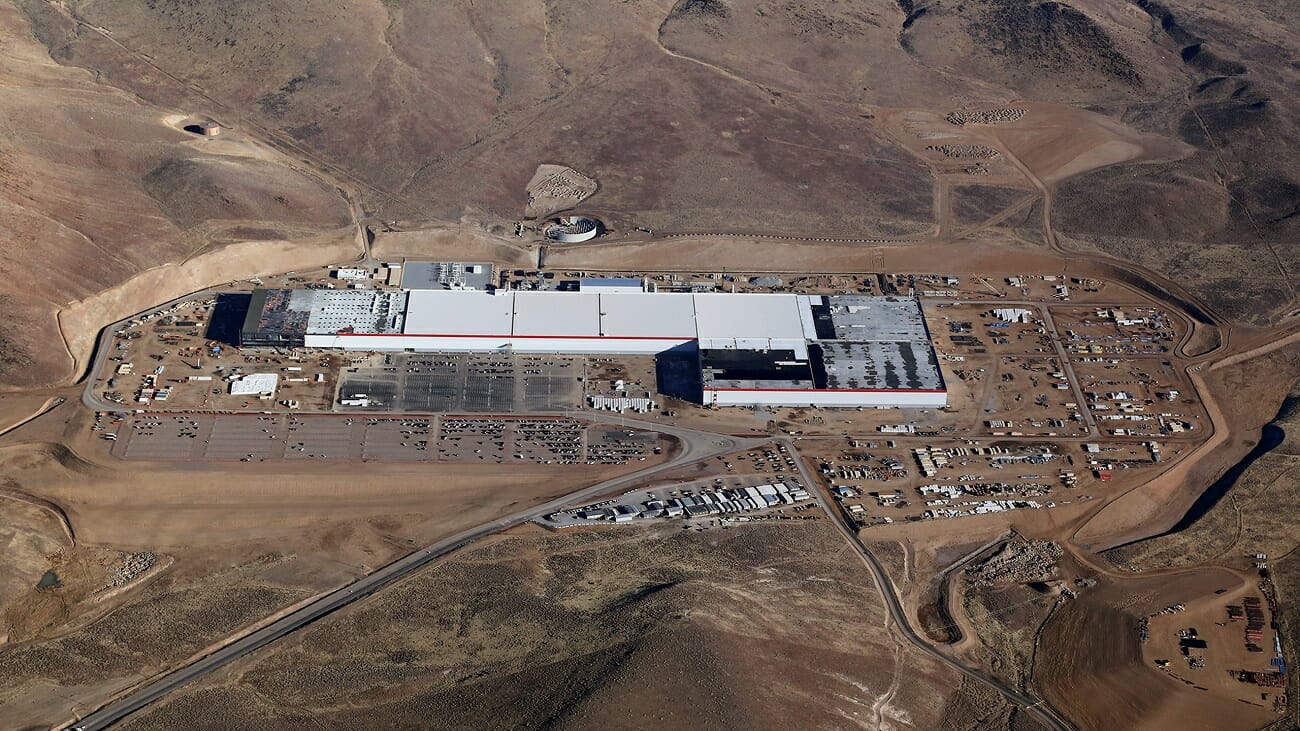Final piece of Tesla's $1.25 billion tax incentive deal falling into place

One of the last pieces of the $1.25 billion state tax incentive package granted to electric car manufacturer Tesla is finally falling into place.
Tesla presented its application for the Economic Development Rate Rider program, which was part of the inducement legislation passed in 2014 to attract the company’s massive lithium ion battery factory to Storey County. That program gives new companies moving to the state a rebate on their electric bills that tapers over an eight-year period. Tesla made its pitch for the incentive to the state's Public Utilities Commission earlier this month, with a final decision from energy regulators expected in the coming weeks.
Though it only makes up a tiny chunk of the billion-plus dollars in incentives and transferrable tax credits granted to the company through the 2014 law, an approved application could save Tesla an estimated $8 million in power costs at the Northern Nevada “Gigafactory,” including nearly a third of its electric bill over the next two years. The program itself offers the following discounts over an eight-year period:
- 30 percent in the first two years
- 20 percent in the third through sixth years
- 10 percent in the seventh and eighth years
Expansion of the incentive was part of the 2014 deal between Tesla and Nevada approved by state lawmakers, but the program itself is technically available to any new commercial or industrial customers that have applied for other state economic incentives and have an electric load or demand higher than 300 kilowatts.
Steve Hill, director of the state’s economic development office, said that the incentive program was originally created in the 2013 session as a more general economic development tool, but was essentially taken over as part of the buffet of incentive options to attract Tesla during the 2014 negotiations.
The program itself has a 50-megawatt statewide cap, with individual applicants only allowed to apply for up to 25 megawatts. Under state law, businesses that enter into the incentive program are required to meet certain reporting and technical minimums, or else risk paying back the savings garnered through the program.
Utilities in several states, including California and Florida, offer rate rider incentives as part of their toolbox of economic incentives to attract new businesses or expand existing ones.
A spokeswoman for the Nevada’s economic development office said that Tesla was currently the only active applicant for the program, and that it wasn’t clear whether the other intended applicant —- electric car startup Faraday Future — would meet the minimum standards to apply before the program expires at the end of 2017. Hill said that his office was working with other potentially eligible companies to take advantage of the incentive.
Petco also applied for the incentive program in 2014, but was rejected by state economic officials because the state had already assigned its 25 allowable megawatts in Northern Nevada to Tesla.
Tesla filed its initial application for the program in February, with an expected power demand of 320 megawatts. The company was “pre-approved” for the program in 2014 by state economic development officials, but delayed enrollment until the Gigafactory was producing batteries to take the fullest value of the credit.
NV Energy spokeswoman Andrea Smith said that in general, customers who meet the full 25 megawatt cap will likely see savings between $5 and $10 million over the 10 required years of the contract, depending on load factor — the amount of energy used by a customer versus the maximum they can use. The incentive program requires a minimum 50 percent load factor for each year of the contract.
Unlike other states, Nevada’s “rate rider” program isn’t directly tied to requirements for new employment or increased capital investment, though Tesla is already committed to several of those goals through the other portions of its incentive deal with the state. According to a June audit report, the company has doled out more than $1.1 billion in capital investment in the factory since 2014, and has hired more than 380 employees and 550 construction workers.
Though the estimated $8 million is significant, it pales in comparison to the other incentives received by the company that include a 20-year sales tax exemption and 10-year property tax abatement. Combined, those have an estimated value of more than $1 billion.
